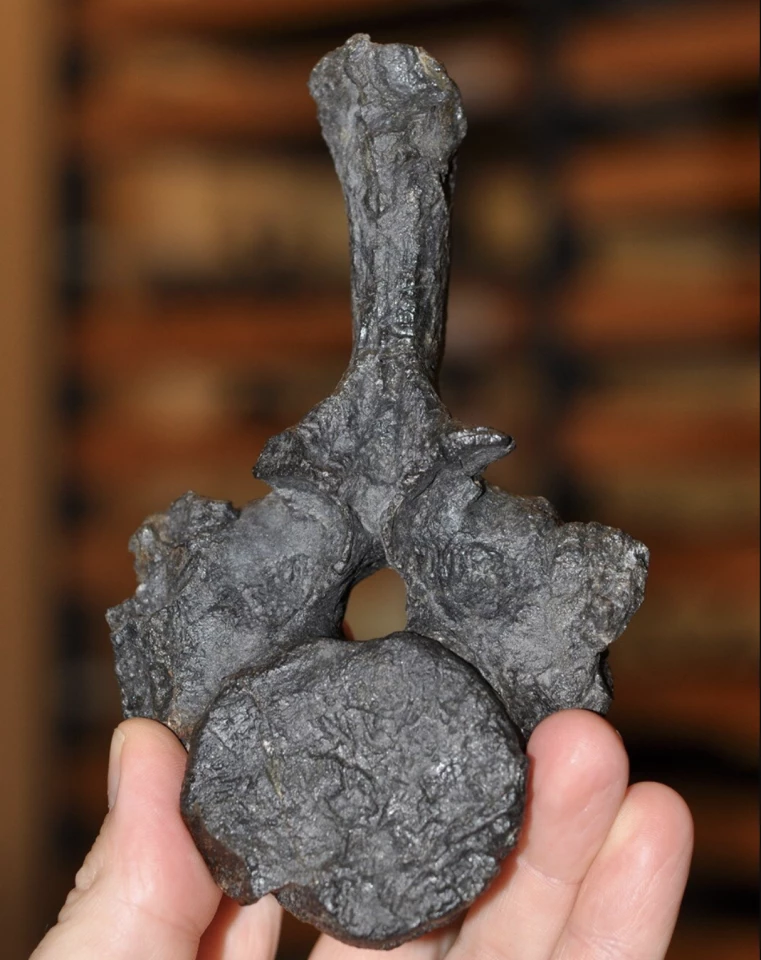A single vertebra dug out of a boulder in a stream below a mountain in New Zealand in 1978 has now been found to have belonged to the oldest known sea reptile in the Southern Hemisphere, where no record of these huge beasts had existed until now. It dates back 246 million years, making it the oldest ever found in the region.
Paleontologists from Uppsala University in Sweden, as well as Norway, NZ, Australia and East Timor made this discovery when analyzing a collection of fossils that lacked accurate identification. Through analysis and phylogenic work, the team placed this piece of vertebra as one belonging to a nothosaur, who inhabited the southern polar coast in the super-ocean of Panthalassa.
"The nothosaur found in New Zealand is over 40 million years older than the previously oldest known sauropterygian fossils from the Southern Hemisphere," said Benjamin Kear from The Museum of Evolution at Uppsala University and lead author on the study. "We show that these ancient sea reptiles lived in a shallow coastal environment teeming with marine creatures within what was then the southern polar circle."

The nothosaur is part of an extinct superorder of reptiles known as Sauropterygia ('lizard flippers'), who were forced from land to water following an extinction event that wiped out 95% of life on Earth. Fossil records have revealed how quickly these reptiles adapted to their new aquatic habitat, and they flourished for more than 180 million years. But until now, we only had evidence of their existence in waters near the Arctic and southwestern China.
"Using a time-calibrated evolutionary model of sauropterygian global distributions, we show that nothosaurs originated near the equator, then rapidly spread both northwards and southwards at the same time as complex marine ecosystems became re-established after the cataclysmic mass extinction that marked the beginning of the Age of Dinosaurs" said Kear.
This discovery is a significant one, as it upends the existing theory that nothosaurs took millions of years to disperse to other regions, in particular towards the South Pole.
"The beginning of the Age of Dinosaurs was characterized by extreme global warming, which allowed these marine reptiles to thrive at the South Pole," said Kear. "This also suggests that the ancient polar regions were a likely route for their earliest global migrations, much like the epic trans-oceanic journeys undertaken by whales today."

The researchers believe their fossil belongs to a taxon closely related to Nothosaurus and Lariosaurus. Nothosaurs, which could grow up to seven meters (23 feet) long, are thought to have evolved from terrestrial lizards, sporting paddle-like limbs, long necks and sharp, conical teeth. They're also believed to be a distant ancestor of plesiosaurs, the iconic long-necked reptiles that dominated oceans during the Mesozoic Era, before they too suffered the same fate as the (non-avian) dinosaurs and were wiped out in the Cretaceous–Paleogene extinction event.
"Undoubtedly, there are more fossil remains of long-extinct sea monsters waiting to be discovered in New Zealand and elsewhere in the Southern Hemisphere," added Kear.
The study was published in the journal Current Biology.
Source: Uppsala University






